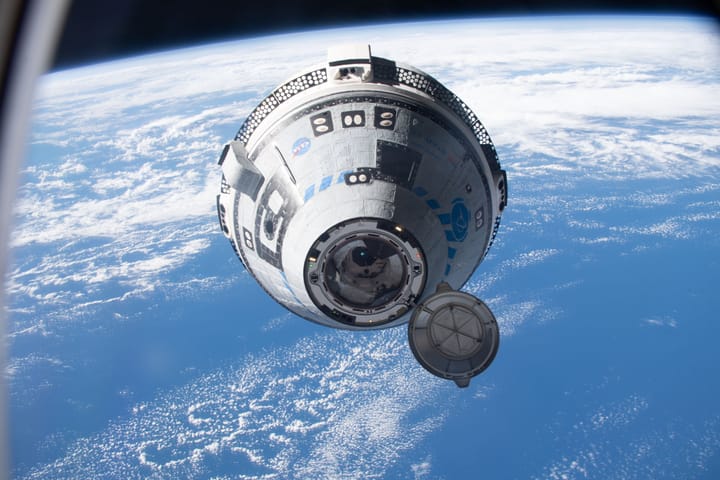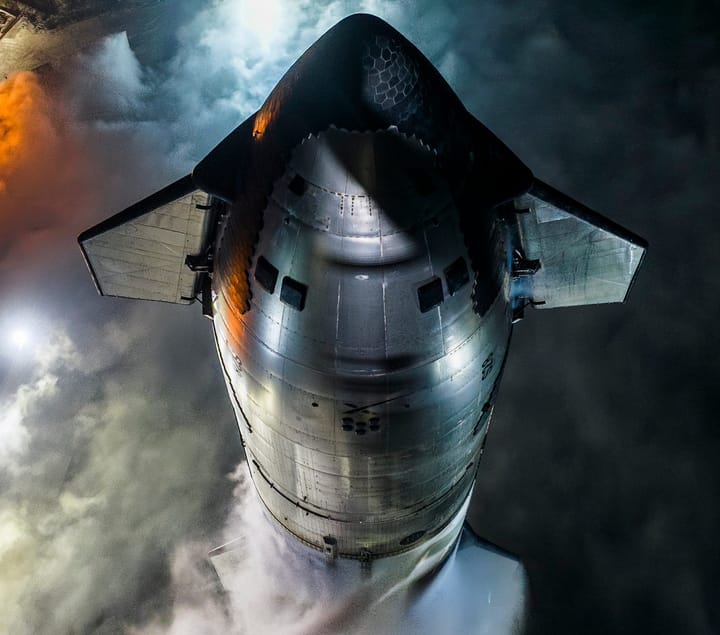SpaceX has succeeded in launching Starship from Starbase in Boca Chica, Texas for a third time. The monolithic rocket took off at approximately 8:25 a.m Central Time. The launch was delayed by a few hours, pushing it late into the launch window on 14 March. SpaceX had been monitoring upper level winds that could have violated launch criteria, but conditions improved enough for the team to proceed with the count, with the T - 40 seconds holding point not needed.
As the T-0 point arrived, all 33 Raptor rocket engines ignited successfully on the super heavy booster, and the gargantuan rocket lept off the pad at T+2 seconds. As was the case in the second flight, the rocket quickly accelerated on a nominal trajectory. All seemed to go to plan as it accelerated, and at T+2 min 48 seconds, the hot staging maneuver was commenced as the rocket broke through 5,700KM/H and 68KM in altitude.
Once hot staging had taken place, the super heavy booster's boost-back burn started, with the 13 center raptor engines igniting successfully. This maneuver flips the booster around, slowing it down to make its way to the pre-detirmined point in the Pacific, where it was set to fall into the ocean. While the boost-back burn happened, the six engines aboard Starship lit successfully as well, and the Starship was set on course for a near orbital insertion.
As the booster made its way back to the splash-down point, things started to go wrong. As the booster crossed through 7KM in height and 1,900KM/H in speed, the grid-fins on the sides of the booster started actuating, visibly trying to stabilize the booster as it started to yaw and oscillate on its way down. As the booster neared the ocean, it appeared as though three engines attempted to restart to slow the booster as part of a landing burn; however, it was apparent that the restarts were not successful, as the engines seemed to fail immediately. By this point, it was clear that the booster was going to be destroyed spectacularly, and it seems to have impacted the ocean just below supersonic speed. One could only imagine the energy released as the 71-meter tall booster impacted the ocean.
After the booster's rather energetic send-off, Starship continued on its coast phase. It had at this point gotten much farther than it had on OFT-2. While the ship was coasting, SpaceX performed a series of tests in flight to demonstrate a few key features that would be vital for the spaceship in the context of its later missions. The team opened and closed the payload doors through which future starlink satellites would be deployed. In addition, a fuel transfer was performed onboard the booster as a demonstration of this capability that will be needed for the Armetis moon missions for NASA, that would require on-orbit refueling. It is not yet clear if this test was a success.
Once the tests had been completed, Starship readied to enter the atmosphere again, and this time would be the first occasion where the ship's thermal protection system would be tested in a deorbit maneuver. Astoundingly, the onboard cameras continued to roll on SpaceX's livestream as hot plasma started to form around Starship as it plunged through the atmosphere.
The spacecraft continued on its descent; however, it soon became apparent that it was struggling with attitude control. At points the ship was facing perpendicular to the direction of travel, and plasma could clearly be seen forming on unprotected areas of the hull, suggesting that the ship may have burned up on reentry as a result. SpaceX has yet to confirm this.
With OFT-3 now complete, it is expected that a mishap investigation has been triggered by the FAA as a result of the energetic crash of the booster and the possible burn-up of Starship. SpaceX will release updates in the coming weeks before they set their sites for the next flight test scheduled to take place later this year.
All video footage courtesy of SpaceX





